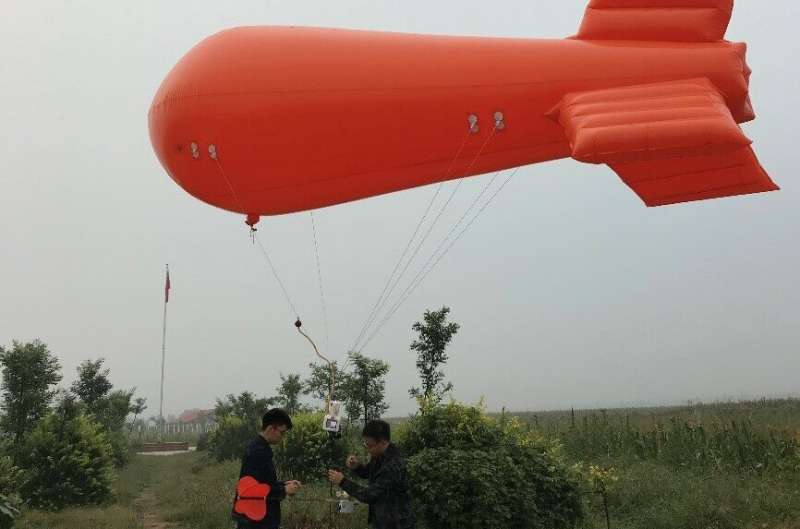The vertical evolution of volatile organic compounds vary between winter and summer

Scientists have discovered that pollution concentration varies between seasons. A new study, conducted in the North China Plain, determined where volatile organic compounds (VOCs) are distributed within the vertical layers of the atmosphere, and found notable changes from winter to summer.
"The concentration of VOCs in the vertical direction was much higher in winter than that in summer and their emission sources showed different contributions in both seasons," said Guiqian Tang, associate professor in the Institute of Atmospheric Physics, Chinese Academy of Sciences, and the corresponding author of a study just published in Advances in Atmospheric Sciences .
The researchers conducted a field campaign from June 8 to July 3, 2019. They focused on VOCs, which react with nitrogen oxides and carbon monoxide to produce excess ozone (O3), a notable greenhouse gas. The most serious photochemical and VOC pollution in the North China Plain is concentrated near the city of Shijiazhuang, where the team chose to conduct their research.
"Photochemical pollution in summer over the North China Plain is a serious problem, but the mechanisms are not fully understood," said Dr. Tang. He also cited the importance of analyzing the vertical layers of the atmosphere to understand how VOCs evolve vertically and contribute to O3 formation.
Researchers used a tethered balloon, which was better suited than tower, aircraft, and unmanned aerial vehicles for low altitude observations below 1000 m. The balloon explored the vertical evolution of VOCs in the atmospheric boundary layer near the surface.
"Our findings in this campaign were compared with the results of our winter observations from January 2019. It showed that the VOC concentrations and proportions in winter and summer exhibited significant differences vertically," Dr. Tang said.
The total VOC concentration was relatively uniform through the year below 600 m, slightly increasing from 600 m to 1000 m through summer. Alkanes were the largest chemical species in both winter and summer, according to the researchers. These VOCs result from gasoline combustion in vehicles and industrial sources, and accounted for the largest proportion of VOCs that gradually increased at each sampling height.
"We should take measures to improve oil quality to limit exhaust emissions of motor vehicles to reduce VOC pollution," said Dr. Tang. He and his collaborators showed that gasoline emissions from vehicles should be controlled at the surface. Meanwhile, the effects of reducing VOC-based industrial pollution is most impactful at high altitudes.
Soon, researchers also plan to observe the vertical evolution of nitrogen oxides to further explore the formation mechanisms of O3. Nitrogen oxides and carbon monoxide present in the atmosphere are critical components in the reaction that produces ozone in the lower atmosphere.
More information: Shuang Wu et al, Vertical Evolution of Boundary Layer Volatile Organic Compounds in Summer over the North China Plain and the Differences with Winter, Advances in Atmospheric Sciences (2021). DOI: 10.1007/s00376-020-0254-9
Provided by Chinese Academy of Sciences





















